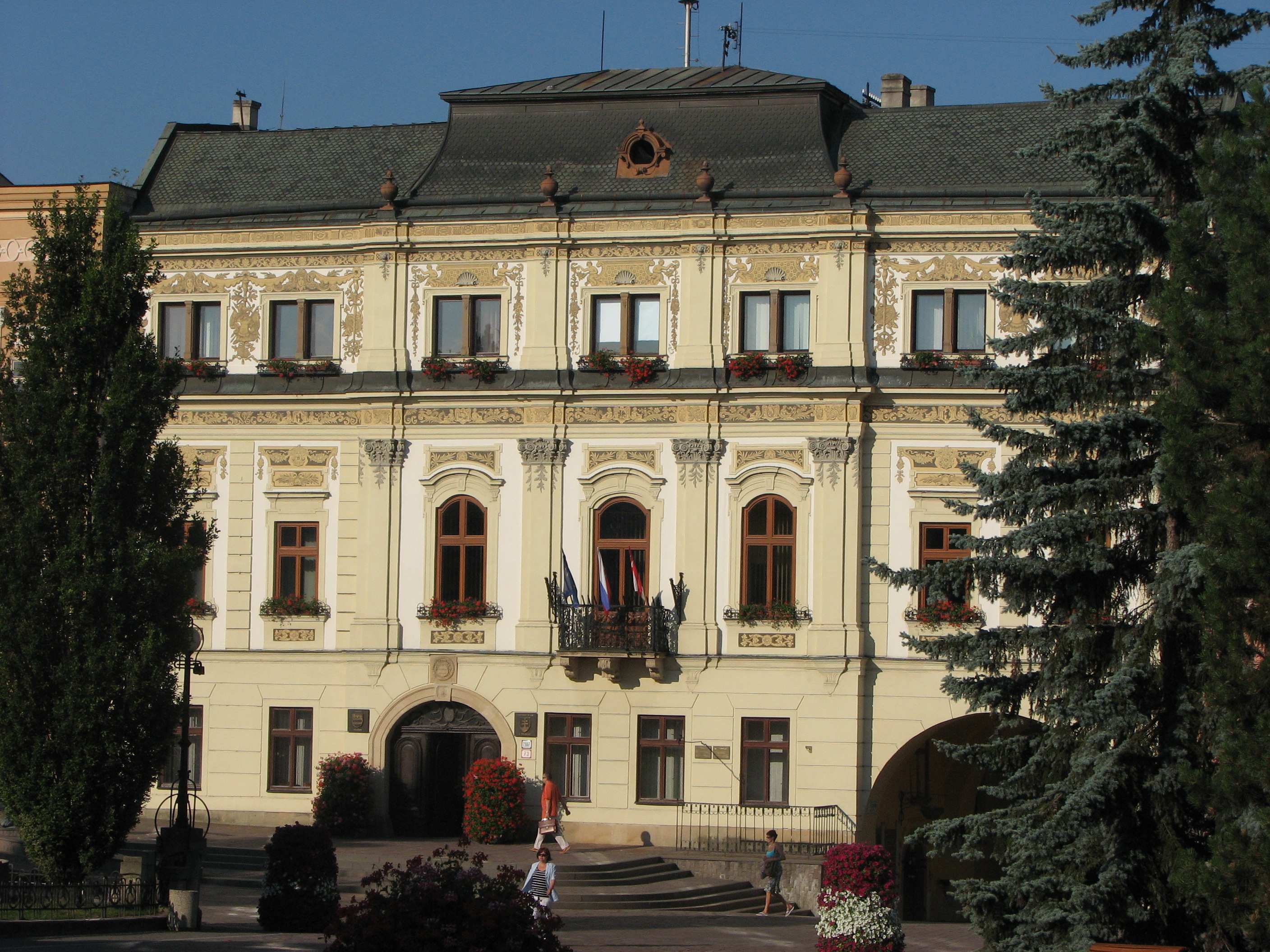Radnica

Na východnej strane námestia, oproti Neptúnovej fontáne, sa nachádza historická budova prešovskej radnice.
Radnica stredovekého Prešova stála pôvodne na inom mieste. Bola to samostatne stojaca dvojpodlažná kamenná budova, postavená južne od farského kostola, niekde na mieste dnešného parku s pomníkom Červenej armády. V priebehu 17. storočia ju však magistrát z neznámych dôvodov (pravdepodobne poškodenie počas požiarov) opustil a presťahoval sa do objektu, ktorý slúži tomuto účelu dodnes. Presná podoba pôvodnej radnice nie je známa, zachoval sa z nej iba kamenný mestský erb z prvej polovice 16. storočia, sekundárne umiestnený v portále neskoršej radnice.
Nová budova bola v stredoveku honosným meštianskym domom. Začiatkom 16. storočia ju pod vedením kamenárskeho majstra Jána Brengyszeyna prebudovali na mestskú vináreň a na tento účel slúžila takmer po dve storočia. Z gotického obdobia sa zachovali iba niektoré fragmenty v interiéroch, portál a neskorogotické ostenie na prízemí. V druhej polovici 16. storočia bola vináreň rozšírená o prístavbu nad uličným priechodom, spájajúcu dve štvrte námestia a renesančne upravená. Interiéry vtedy zaklenuli renesančnými klenbami a stavbu ukončili bohatou štítkovou atikou.
Po neskorších prestavbách sa z tejto podoby dodnes zachovali klenby a viaceré renesančné ostenia. Dôkladná prestavba nasledovala po požiari r. 1768. Ukončená bola r. 1788, keď dostala neskorobarokovú podobu s typickým priečelím s vysokými oknami a balkónom. Posledná prestavba prebehla po veľkom požiari r. 1887. Vtedy nadstavali druhé poschodie a v novobarokovom duchu upravili strechu budovy.
Do novších slovenských i stredoeurópskych dejín sa radnica zapísala r. 1919. Po obsadení mesta a veľkej časti východného Slovenska maďarskou Červenou armádou bola 16. júna 1919 z jej balkóna vyhlásená Slovenská republika rád. Od r. 1945 sídlil v budove mestský národný výbor, po r. 1990 mestský úrad. V roku 1961 bola radnica zapísaná do zoznamu národných kultúrnych pamiatok.
Súčasťou radnice je mohutná kamenná stavba, priliehajúca k nej z Jarkovej ulice, nazývaná Caraffova väznica.